BY STEPHEN HUMPHRIES
On To the Bone, Steven Wilson has stripped his music to the most fundamental elements of songwriting: vibrant verses and catchy choruses.
As he puts it, “The biggest challenge of all was to write a song-based record. The focus is on melody.”
To the Bone more than delivers on SW’s credo of changing from album to album. It’s an adventurous rock record influenced by sophisticated pop records that were once mainstays of the Top 40. Think Kate Bush’s Hounds of Love, Peter Gabriel’s So, Prince’s Parade, Tears for Fears’ Seeds of Love, Talk Talk’s Colour of Spring, and Depeche Mode’s Violator.
“I’ve changed the flavour of the music by trying to write in a more positive way and I’ve changed the structures by writing in a more concise way, but not to the extent of dumbing down or simplifying my vision in any way” – SW
To that end, Steven’s ambitious and stylistically diverse songs often go off-roading rather than stay confined to the grid maps that conventional songwriters follow. That’s as true of the three-minute “Permanating” (whose arrangement continually undulates like the steps of an escalator), as it is of the nine-minute “Detonation” (whose three movements unfold with the complexity and precision of a battleground manoeuvre).
In an era in which much music is recorded on laptops and utilises off-the-shelf sounds, SW and co-producer Paul Stacey created aural panoramas through their own artisanal studio craft. Paul encouraged SW to focus on performance rather perfection. Result? These recordings carry the electrical charge of musicians playing as if they’re touching the third rail. Steven approached his guitar solos with derring-do swagger. On songs such as “Refuge”, “Song of Unborn”, and “Detonation”, his voice bears the full emotional weight of the lyrics.
Although much of the album examines the worrying state of the modern world, To the Bone also includes moments of surprising playfulness and exuberance. To the Bone is unmistakably a Steven Wilson album—one that marshals his distinctive musical qualities in fresh idioms.
In the first instalment of this two-part conversation, Steven offers insights about each track on To the Bone.
TO THE BONE
It starts with a voice. Accompanied by a loping keyboard figure, American schoolteacher Jasmine Walkes offers a brief soliloquy about clashing notions of truth during an intolerant age. The atmospheric intro ushers in a reverberating guitar power chord, a Bulgarian singer’s wordless ululations, and a harmonica that sizzles like butter on a griddle. Then the song explodes with Jeremy Stacey’s spring-coil funk drumming and Pete Eckford’s hand percussion. Steven’s guitar solo rises up like a colossal creature from the deep, amplifier feedback rippling like tsunami waves in its unstoppable path. A dynamic album opener.
“To the Bone” is a big opening statement track.
It’s a rocker. Harmonically, it’s very traditional in its use of blues and rock. But what it has in its favour is a sense of drama and a very nice shape in the way that the track progresses. I love the outro, which drops down to half-time and becomes very ethereal.
Andy Partridge of XTC fame wrote the lyrics for “To the Bone.” What’s the song about?
“To the Bone” is about that Trump era idea of truth as a flexible concept, open to interpretation. Which is of course an oxymoron, how can truth be open to interpretation, it must be an absolute mustn’t it? Yet we’ve had recent political campaigns that showed us that truth is actually nothing of the sort, it’s actually more about twisting the facts to create different perspectives. So “To the Bone” is a cry from the heart to get right down to the bone and find out what the reality of a situation is, and if there is some truth to be found at the core.

SW with Andy Partridge in 2016
You named the album after this song, but one of the titles you were considering was “Ask Me Nicely”, taken from a bonus song that’s ultimately ended up on the deluxe edition.
This album is not necessarily a concept album, but one thing that the songs do have in common is looking at the things in the world that aren’t so great. And one of those things is the lack of basic manners I see around me in the world today. I see that rudeness and lack of respect for fellow human beings everywhere.
We even have a US president apparently lacking the very basic qualities of human courtesy, but it’s a sign of the times, an indication of where we’ve arrived as a species.
It’s also inspired by the way that people talk about others online in forums. If these people said the same things face-to-face it would be considered deeply insulting. They may not even be naturally rude people, but it feels okay for them to do it from the anonymity and safety of the virtual world.
NOWHERE NOW
The verses of “Nowhere Now” detail a litany of societal ills. By contrast, the chorus offers a counterpoint of hope. As the song reaches its ascension point, Jeremy Stacey cuts loose with drums fills that clatter like a Gatling gun. A future single.
The lyrics to this song underscore the notion that there’s a lot less civility in the world of late.
The first line, “Six feet underground, we move backwards now,” is about the human race being in a state of devolution. But the chorus is from the perspective of a spaceman floating in space, looking down at the beauty of Earth and seeing a much wider and more positive perspective and, I suppose, a more personal one.


What were your goals for this album at the outset?
Trying to write more concise, song-based music has been the greatest challenge of all. One of the things I did repeatedly during the writing process is check myself whenever I felt I might be disappearing off into complexity or a more muso-oriented direction. Most of the songs, even ones like “Permanating” and “Nowhere Now”, at some point were longer and more complicated. I disciplined myself to throw some material away, some of which was good! I needed to focus on the heart of the song, the heart of the melody, the heart of the emotion. But I still wanted the songs to be interesting, so they have multiple layers in the production and the arrangement. The songs I ended up with were the ones that were successful in achieving that. There were a lot of that didn’t get out of the starting gate.
So, how do you go about changing the musical style? Does it begin with the gear and the instruments you write on?
Oftentimes technology can encourage you to go about making music in fresh ways. It was you that mentioned to me that, “If you want to reinvent yourself, start with the drums.” I think that’s also true. If you change the musical palette that you’re using then the songs take a different direction.
This time around, I also used more electronic elements. I’ve not made an electronic record, but there’s something about the record that does have more of an electronic sensibility.
On this album, there are appearances by your regular band members, Nick Beggs (bass), Adam Holzman (piano, keyboards), and Craig Blundell (drums), but you’ve handled the vast bulk of the instrumentation yourself.
That’s no reflection on them. I think it’s that most of the keyboard parts, the guitar parts, and the bass parts are very much cast in my image and personality as a player.
I didn’t realise Dave Kilminster, your guitarist for most of the Hand.Cannot.Erase. tour cycle, would be on this record… as a backing singer for songs such as this one.
I’d already told him that I wanted to play a lot of guitar myself and he totally understood that. But he also said that if there was a chance for him to do some harmony vocals or backing vocals he would really love to do it. So he sang harmonies on four songs. His voice works very nicely with mine. I’m really happy that everyone from the recent band is on the record in some way.
PARIAH
The duet seesaws from Steven’s careworn complaint to the nudging reassurances of Ninet Tayeb, the Israeli singer who cameoed on Hand.Cannot.Erase. and 4 ½. When the guitars gust in, the effect is like getting caught in a dust storm on Mars.
The song “Pariah” starts with such an entrancing and dreamy keyboard pattern. Was that the first element of the song you had?
There are arpeggiators or sequencer patterns at the heart of a lot of the songs.
This ballad starts off with an arpeggiated synthesiser and ends with a white-out ethereal shoegazer guitar section.
“Pariah” is like a quintessential “Don’t Give Up” song, a positive message extracted from the gloom.
The Instagram and YouTube video clip of you and Ninet Tayeb recording “Pariah” had an overwhelmingly positive response from fans.
Ninet was here for three days and she sang on, I think, seven of the songs in various ways. Some of it was backing vocals but she is of course featured on “Pariah” and a couple of other songs. She’s stunning, every time she sings, people’s jaws just drop.
Can you illustrate just how co-producer Paul Stacey pushed you on this track?
He made me focus on performance. It’s hard to do that because the tools are so easily available to fix everything, so you almost don’t have to try so hard these days. But he made me sing live with Ninet, literally opposite her in the studio, which wasn’t easy for me. But it made me focus on being a singer rather than on a writer who happens to sing, if you see what I mean?
THE SAME ASYLUM AS BEFORE
A delicious shiver of a copper slide scraping Telecaster strings. A helium falsetto at the high end of Steven’s vocal range. A guitar solo that starts as abrasive as a Pumice stone and ends as smooth as a river pebble. And a chorus that will become a sing-a-long anthem in concert.
What’s this song about?
That it doesn’t matter what politician you vote for, or which religion you align yourself with, you’re still stuck in the same madhouse!

This is one of several tracks on the album where you really cut loose during the guitar solo.
I fell in love with Fender Telecasters on this album. I’d had one for a while, but it had been sitting in the corner unused.
One day when my other guitars were out on the road somewhere, I picked up the Telecaster, which I hadn’t really played before, and suddenly found a new way of playing.
This is really a Telecaster song with that very wiry, trebly sound. The great thing about Telecasters is that they really rock without needing to add a lot of drive or distortion to them. They just cut through, that Pete Townshend sound.
What’s inspired you to take on more guitar duties this time around?
I have a sound, I have a style and it works well with this particular kind of material, where I want the guitar solos to be an extension of the vocal melodies. The solos are more succinct, they’re more laid-back, they’re more melodic and catchy perhaps. I’ve enjoyed playing the guitar again and it has stamped a certain personality on the material.
REFUGE
Inspired by the plight of Syrian refugees, mid-album highlight “Refuge” has a bell-curve arrangement. The ballad climbs from hushed beginnings to an apex in which Paul Stacey’s guitar, Mark Feltham’s harmonica and SW’s synth solo unite in vehement outcry. As the music subsides on the other side, a crowd of protesters cry out with emotional pleas that pierce one’s conscience.
What’s “Refuge” about?
The crisis we had here at Calais. It’s still going on to a lesser extent, but at that time in December 2015 it was big news every day in England. There were many attempts by refugees to smuggle their way through the channel tunnel into the UK, during which some of them died. It was very sad because there was a city developing on the other side of the tunnel where human beings were living in the worst possible conditions, incredible squalor.
I didn’t want to write a political song. I wanted to write about the human side—what can it be like to leave your family behind in a dangerous place and to exist in those conditions, and about how the human spirit can transcend that. It’s a song about being separated from loved ones, your roots and country.
Tell me about how you came up for the sound of that one, which again is very contemporary and has an electronic component.
Again it was based upon experimenting with the arpeggiator on the Prophet-6 synthesiser, cyclical electronic patterns. I stepped up to piano and played chords over the top. It’s tended to always worked for me, that approach.
One of the interesting things about “Refuge” is that it doesn’t follow conventional song structure. It’s really just a couple of chord progressions, one of which goes through the first three minutes, and one of which picks up for the second half of the song. It’s how the piece builds and builds that makes it work, adding elements and layering and building tension towards some kind of release.
There’s a moment when the keyboard comes in with a spine-tingling sound.
There’s a keyboard that Robert Wyatt used in the 1970s on albums like Rock Bottom. It has a slightly wavy quality as if it’s coming from a faulty tape recorder. I love sounds with that tremulous quality to them. I’ve invested in a few new keyboards to inspire me to write for this new record. The first thing I do when I get one is just turn it on and try to get sounds out of it in an intuitive way. I’m not the kind of person who likes to use presets, I always feel slightly guilty if I’m using sounds that have been provided. So I start turning knobs and trying to create interesting sounds. A lot of the electronic elements on this record have come from me messing about with the Prophet-6.
Your co-producer Paul Stacey plays a remarkable guitar solo on this.
Yes, I knew I wanted a guitar solo but I had no idea how to approach it so I handed him a guitar and said, “You play it!” After a few takes, we got that one. He’s one of those guys who never plays the same way twice. He improvises so every solo is different, it’s just a question of knowing when you’ve got the “one.”

SW with Paul Stacey, 2016




